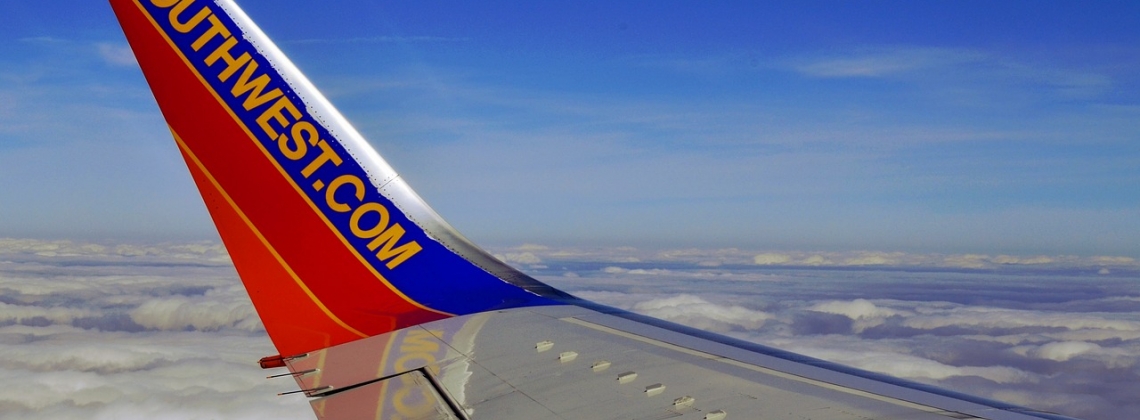Southwest reaches farther with 50 new international routes

To date, Southwest – the largest airline in the U.S. by passenger numbers as well as the largest low-cost carrier in North America – has been flying near-international routes. But now, the one-time regional airline is looking to fly further outside the U.S., with up to 50 untapped destinations including South America, the airline’s chief says.
A little bit of history: the Dallas-based carrier commenced operations in 1971, starting out with flights only within three Texas cities – Houston, Dallas, and San Antonio. This allowed it to avoid the Civil Aeronautics Board’s (CAB) monopoly regulation on airlines and operate a low-cost model.
Following deregulation in 1978, Southwest steadily grew to become a major U.S. airline within only a decade, when, in 1989, it exceeded the billion-dollar revenue mark. The era of affordability in air travel that followed was described by the U.S. Department of Transportation as “The Southwest Effect.”
A new century – a new era for Southwest. In 2003, the airline topped the monthly U.S. domestic passenger rankings for the first time. Today, it flies more passengers than any other U.S. airline. For instance, according to its latest traffic report, Southwest flew 11.2 billion revenue passenger miles (RPMs) in April 2018 with a load factor of 82.5%. Overall, during peak travel seasons, the carrier operates more than 4,000 daily flights.
For the “granddaddy of low-cost carriers”, 2013 marked the year when Southwest began flying to a destination outside the 48 contiguous states in U.S. with service to Puerto Rico. And only a year later, in July 2014, the once-regional carrier became an international airline with its first flights to Nassau, Bahamas; Montego Bay, Jamaica; and Aruba, all in the Caribbean.
And now, the big news: when talking to shareholders on May 16, 2018, Southwest’s CEO Gary Kelly indicated that there are as many as 50 destinations in North America and parts of South America that the airline COULD serve, aside of (only) 14 international destinations it currently operates. 96% of the carrier’s flights are domestic, Kelly pointed out.
That’s all good to hear, except the part that “It may take us 25 years,” as the chief was quoted saying by CNBC. But remember, Southwest began flying internationally only recently. True, some routes were inherited from AirTran Airlines, which merged with Southwest in 2011. However, others are the result of the expansion of Southwest’s own route network.
As of May 2018, Southwest Airlines serves 100 destinations in 40 U.S. states, the District of Columbia, the Commonwealth of Puerto Rico, Mexico, Central America and the Caribbean. By the way, hats off to Southwest for being one of a handful of U.S. airlines awarded routes when direct flights between the U.S. and Cuba resumed in 2016.
This will sound contradictory, but it seems that Southwest is actually focused on growing its domestic network this year. In 2017, the airline announced its plans to offer service to Hawaii and to expand its operations in California accordingly. On May 3, 2018, the company announced the much-anticipated news that, pending required regulatory approvals, its new non-stop Hawaii flights (including flying between the islands) will take off from four cities in California: Sacramento, Oakland, San Jose, and San Diego.
So how about adding those 50 international flights? “Not all next year,” Kelly was quoted as saying by CNBC. An expansion to South America could include destinations in Colombia, Ecuador, and Peru, where tourism has grown in recent years, since the carrier’s core market is leisure travelers. Southwest‘s move could be followed by its U.S competitors, low-cost carriers like Spirit and JetBlue, and possibly put it in competition with other major airlines – Delta, United and American.
In any case, Southwest is currently in the process of revamping its fleet with new Boeing 737 MAXs, a more fuel-efficient model of the plane. It was the launch customer of the 737 MAX in North America in 2017 and has a fleet of 717 B737s. Perhaps it will rethink those destinations after it upgrades its fleet with the 40 additional 737 MAX 8s it ordered back in January 2018, with deliveries scheduled in 2019 and 2020.
Source – AeroTime

